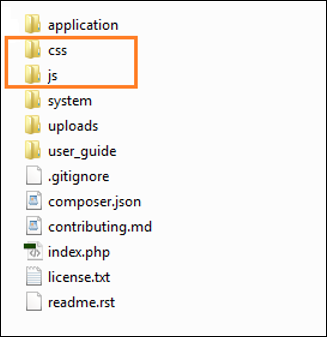

- INSERTING A BACKGROUND IMAGE IN CSS LINK FROM FOLDER HOW TO
- INSERTING A BACKGROUND IMAGE IN CSS LINK FROM FOLDER CODE
- INSERTING A BACKGROUND IMAGE IN CSS LINK FROM FOLDER PLUS
- INSERTING A BACKGROUND IMAGE IN CSS LINK FROM FOLDER DOWNLOAD
Works great with dynamic styles: If you're using a database to generate page content you can also generate dynamic styles at the same time.
INSERTING A BACKGROUND IMAGE IN CSS LINK FROM FOLDER CODE
I use this method on my responsive columns demo layouts so when people view the source of the page they can see the HTML and the CSS code together.
INSERTING A BACKGROUND IMAGE IN CSS LINK FROM FOLDER DOWNLOAD
Similar to the link tag, the type attribute can be omitted for HTML5, and the media value controls when your styles are applied (leave it off to default to all devices).Īdd your CSS rules between the opening and closing style tags and write your CSS the same way as you do in stand-alone stylesheet files.ĬSS rules are render-blocking so it's recommended to add style tags into the of the HTML document so they download as soon as possible. You can embed CSS rules directly into HTML documents by using a style tag. You can include as many CSS files in your HTML document as you like by adding multiple link tags, just remember, each file requires an additional HTTP request. We'll cover the solution to this problem shortly. An additional HTTP request is required for each linked CSS file: Excess HTTP requests can delay the rendering of your page.This can make a big difference particularly if you have a large CSS file. When they navigate to another page, their browser only needs to download the HTML of the new page, the CSS file is cached so doesn't need to be downloaded again.
INSERTING A BACKGROUND IMAGE IN CSS LINK FROM FOLDER PLUS
Site speed increases for multiple page requests: When a person first visits your website their browser downloads the HTML of the current page plus the linked CSS file.Check out CSS Zen Garden for the best example of this. Changing your website theme is easy: You can replace your CSS file to completely change the look of your website.Changes to your CSS are reflected across all pages: You only need to make a CSS change once in your single CSS file and all website pages will update.You can leave off the media attribute completely if you want your styles to be applied for all media types.Īdvantages of linking to a separate CSS file all (default value) This is what most people choose.handheld for handheld devices (typically with small screens).projection for projected presentations.screen indicates for use on a computer screen.The media attribute in a link tag specifies when the CSS rules are to be applied. You can also specify a path relative to the root of your domain by prefixing with a forward slash like this: If it's saved in a folder, then you can specify the folder path relative to the HTML file like this: If the CSS file is in the same folder as your HTML file then no path is required, you only need to specify the filename like in the example above. The href attribute is where you specify the path to your CSS file. If you're using HTML5, the type attribute is not required, you can remove it and save a few bytes per page. The rel attribute is set to stylesheet to tell the browser that the linked file is a Cascading Style Sheet (CSS). We use a link tag which is a simple line of HTML that you put in the head section of your HTML document, it looks like this: This file is saved on your server and you link to it directly from each HTML file. With this method, all your style rules are contained in a single text file that's saved with the. This is the most common method of attaching CSS rules to HTML documents.
INSERTING A BACKGROUND IMAGE IN CSS LINK FROM FOLDER HOW TO


 0 kommentar(er)
0 kommentar(er)
